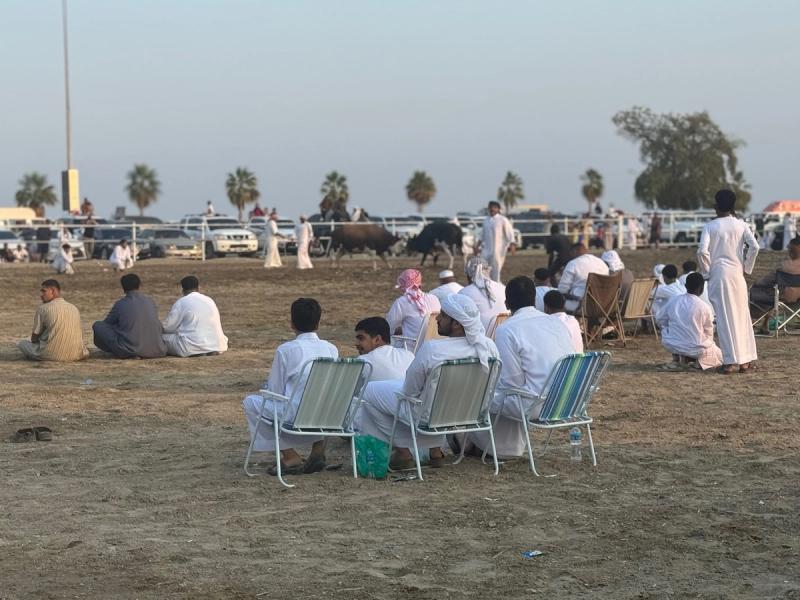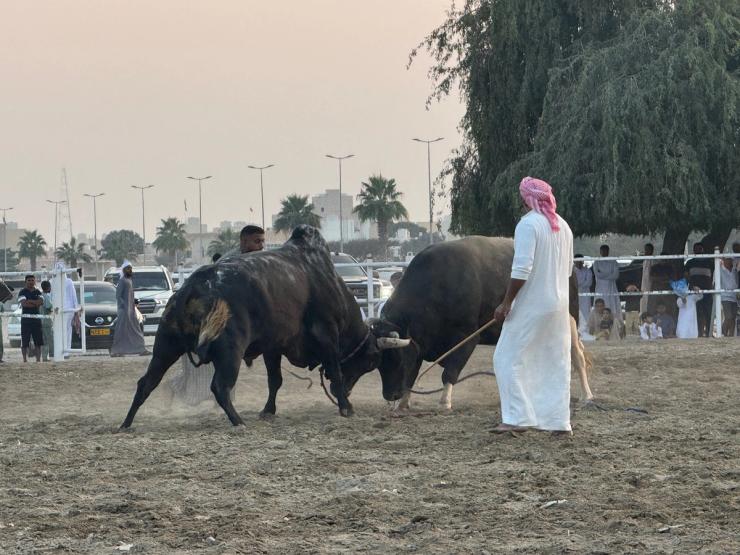Camilla’s view
On new, fast roads, about 128 kilometers (80 miles) separate the Burj Khalifa in Dubai, via the Hajar Mountains, from Fujairah City. It’s a 90-minute journey, but it will feel like you’ve traveled two centuries back from where you started.
Over on the UAE’s east coast, there are no gleaming skyscrapers, no statement architecture, no booming EDM pumped out of beach clubs staffed by moody Russian models.
Instead, an occasionally bleak corniche winds down the coast from a state-of-the-art seaport — strategically placed 70 kilometers from the Strait of Hormuz — past a dusty, sunbaked town of old office towers, hotels, the obligatory shopping mall, and streets of low-rise shops and houses.
Fujairah City briefly shot to global fame in 2017 when it appointed Diego Maradona as manager of its football (soccer) team. One season later, both he, and the spotlight, were gone.
A short walk from that old football ground lies a coliseum which is the global hub of a totally different kind of contest — Bull Butting.
On Saturday mornings, from October to April, organizers’ mobile phones buzz with text messages, all asking just one question: Are the bulls on today? If it’s not too wet or rainy, the crowds, and bulls, make their way from the six other emirates.
The venue — one block back from the seafront, marked simply “Bullring” on Google Maps — is a patch of dried-out grass, around 50 by 50 meters, shaded by trees, with a simple white hut on one side. There’s no fixed start time: It depends on the weather and the card for the day. By late afternoon, bull butting begins, to end at sundown.
Butting aficionados know that the place to wait is the first floor terrace of the Al Bastakiah kebab restaurant — close enough to the bullring to know when to walk over, but far enough away to get a commanding view of the pre-match surroundings.
For a while, nothing happens, the streets are as quiet and dusty as any other day.
Then, around 3 pm, the first bulls are walked up Al Gurfah Street, led by their owners. Then more arrive. Then the pick-up trucks come and disgorge their expensive property around the bullring.
When the gladiatorial contests are ready to start, there are maybe 200 to 400 cars around the square. Land Cruisers vie with battered pick-up trucks for prime real estate just beyond the white fence that demarcates the ring. Occupants put out chairs, spread picnics. Spectators stroll past. You’ll see mainly Emiratis — Fujairah’s population is around 40% Emirati as opposed to Dubai’s 8% — and migrants from the subcontinent. But there are also pockets of Western holidaymakers and some expat regulars. East and west of the ring there are cars, spectators, and owners; north and south, as far as the eye can see, there are bulls.

You hear them as much as see them. Growling, grunting, snorting, and bellowing. Head-shaking and foot stamping. Some stand, quite docile, held on a rope by their handlers. The biggest ones are tied to poles. Bulls with colorful ties in their manes and rings in their noses, lower their horns and scrape their hoofs across the grass, looking like they’re about to charge in a cartoon.
The first matches begin. Small bulls first.
How it works: two bulls are led into the middle of the grass. Like a judo match up. Then they are let go. The goal is for one bull to push the other back, with their head and horns, beyond a designated line.
Some butting contests are over in 30 seconds; others take minutes. When a winner is decreed, everyone claps and cheers and the two leave the field. Two more trot out. The bulls don’t appear to hurt each other. It resembles a martial arts battle more than Spanish bullfighting. These bulls are too valuable to their owners to risk injury.
Inside the white fence that rings the field, uncomfortably close to the action, the owners unfold deck chairs and settle in with their grandchildren cross-legged on the floor around them. From behind the fence, at the white hut, a rudimentary but powerful loudhailer and speaker system is set up, from which a commentator fills every second of dead air with excitable exhortations to Allah combined with knowledgeable play-by-play analysis in machine-gun fast Arabic.
As the bulls get bigger, the jeopardy for the crowd in and around the ring gets higher.
Occasionally, a bull slips his leash and careers off. Sometimes they run laps around the grass square, white-robed handlers and kids in full pursuit. One bull takes a chance and runs towards the fence, a fragile 6-foot-tall barrier that separates the crowd from these 2,000 pound monsters. Spectators scatter, left and right. A few look scared, most laugh: Running from the bulls is as much part of the sport as watching them.
The contests continue, around 50 in one afternoon. Money changes hands, but it’s as much about the prestige and status enjoyed by the victors. Owners bring their beasts time and time again to help, and the victors’ values increase with each win.
By sunset, the commentator finishes his shouting for the day and the bulls are walked home or loaded back up onto trucks and spirited away. The Landcruisers, Jeeps, and Pajeros fill up again, picnics packed away, and drive off. Away from the Fujairah bullring, and back to the 21st century.
Camilla Wright is a media commentator and writer for global news and pop culture outlets, and publishes Britain’s biggest and best known newsletter.
Notable
- The competition gets little attention from local media. Here’s footage of the action from 2019, captured by a UAE travel influencer.
- A 2022 AFP article explored whether the fights — which, unlike in Spain, aren’t lethal — are still cruel to the animals.


